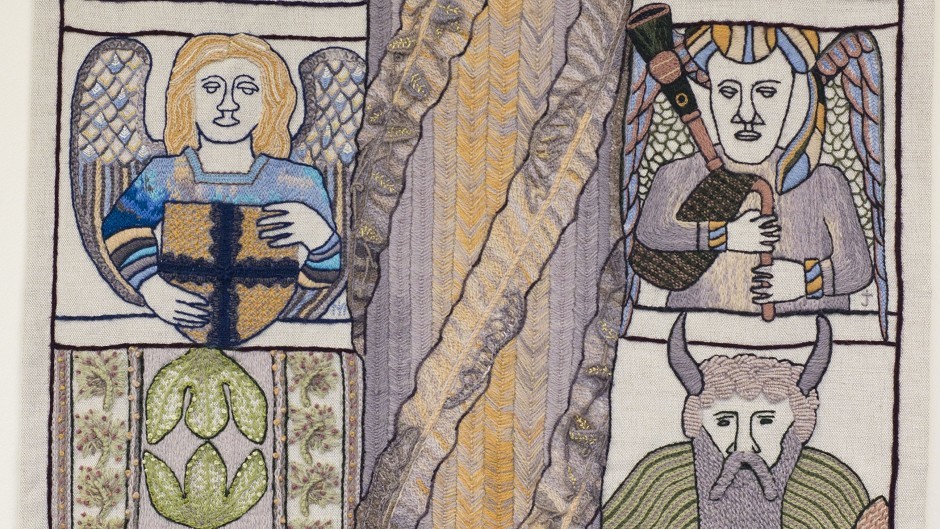One of Scotland’s most popular artworks will be going on display in the Highland capital from Saturday.
About half of the 159 panels from the Great Tapestry of Scotland will be on show at Inverness Museum and Art Gallery until February 20.
The 466ft tapestry, which was the brainchild of bestselling author Alexander McCall Smith, depicts hundreds of millions of years of Scottish history, from the geological formation of the landscape to the reconvening of the Scottish Parliament in 1999.
One of the nation’s largest community arts projects, the story is told in 159 boldly designed and intricately stitched panels that are the work of more than 1,000 stitchers of all ages from across Scotland.
Since its hugely popular debut exhibition at the Scottish Parliament in September 2013, more than 325,000 visitors from all over the world have visited tapestry exhibitions at venues including the Scottish Parliament, Stirling Castle, Paisley Thread Mill, New Lanark and Aberdeen Art Gallery.
In November and December, 30 panels went on display in the Western Isles, and now 80 will be on show in Inverness from Saturday.
They will include the first five panels, depicting Scotland’s earliest history, and the final six.
Many of the tapestries coming to Inverness show events from the Highlands and islands, including the Glencoe massacre, the Jacobite risings, the clearances, Fingal’s Cave, shinty and the Battle of the Braes.
The project’s co-chairman and historian, Alistair Moffat, said: “This is a history of all of Scotland, and one that attempts to compass not only the whole nation but also all of its people as it tells the stories of shepherds, weavers, ploughmen, crofters, fishermen and all of the people who made our story come alive.”
Inverness Museum and Art Gallery will be open during the display from Tuesdays to Friday from midday to 4pm, and on Saturdays from 11am to 4pm.
The tapestry project used a range of embroidery skills and more than 30 miles of woolen yarn to translate Andrew Crummy’s descriptive artwork into a colourful, skilful and textural depiction of the history of Scotland.
More than 1,000 stitchers took part, working together in groups for more than 400 hours per panel from locations around the country, islands and mainland.
It was created on embroidered cloth, rather than as a woven tapestry, and is annotated variously in English, Gaelic, Latin and Scots.
